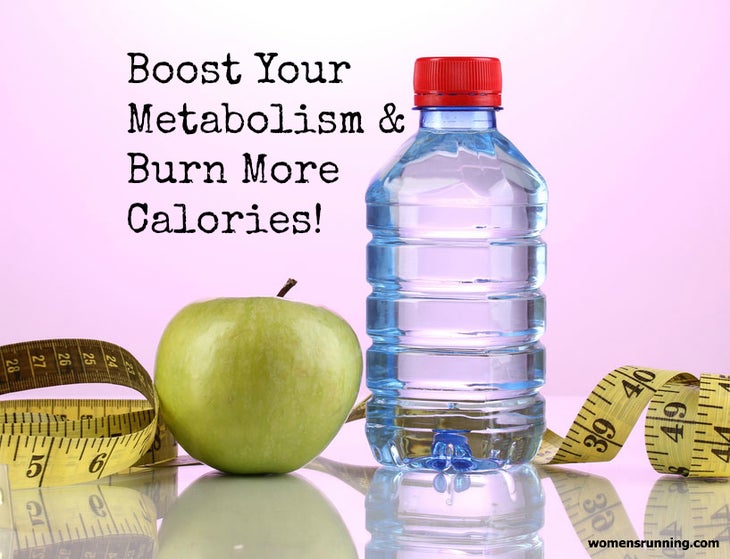New perk! Get after it with local recommendations just for you. Discover nearby events, routes out your door, and hidden gems when you sign up for the Local Running Drop.

You hear the term tossed around a lot. “Mine’s slow!” “Mine’s fast!” “Do this to speed yours up!” But what exactly is metabolism?
Simply put, metabolism is a set of chemical processes that take place within your cells to produce the energy required to keep your body going. Think of each cell in your body as having its own engine that is fueled by calories from the food you eat.
When people refer to metabolism, they’re actually referring to two things: one is your basal metabolic rate, which is the amount of calories your body burns at rest for basic functioning of your organs like your brain, heart, lungs and liver. The second component is your activity level, which is the amount of calories burned off during exercise or any type of movement, says Peter Horvath, Ph.D., associate professor of exercise and nutritional science at the School of Public Health and Health Professions at the University at Buffalo.
The good news: You can always burn more calories. The bad: When it comes to your basal metabolic rate, “that’s not easy to change,” Horvath says. While you might not be able to give your engine a complete refurbishing, you can optimize your basal rate and get the most out of your workouts to torch calories at the fastest pace possible.
Rate Your Burn
So is your overall metabolism fast, slow or in between? Here are some ways to find out where you stand…
Age: Your metabolic rate slows down with age. After 40, expect it to decline about 10 percent per decade, says Polly de Mille, an exercise physiologist and marathon runner.
Genes: Did your parents eat like gluttons when you were growing up and barely put on weight? You’re likely blessed with a naturally fast metabolism, explains de Mille. “Genetically, people may differ in how they extract nutrients from food. Some people can eat the same thing and absorb more calories from it than others,” she explains.
Gender: Women naturally have slower metabolisms than men. This is because men have more muscle mass, which burns more calories, says de Mille. Consider that a light-boned, middle-aged woman who weighs 120 pounds will likely only burn about 1,000 calories a day in a resting state. In contrast, a football lineman will likely burn about 3,000 calories.
Rev Your Engine
Speed up your basal rate with three proven ways to increase your burn.
Lift weights: Building muscle will increase your basal metabolic rate—but not as significantly as you might think. De Mille explains that every pound of fat burns about two calories a day at rest while each pound of muscle burns about six. This means that even if you add five pounds of muscle, you might look fantastic—but you’ll only be burning an extra 30 calories a day. That’s half of a small apple or two peppermint candies.
Work out intensely: Exercise that spikes your heart rate is proven to boost your metabolism well after your sweat session ends. De Mille cites a study of athletes who, after working out vigorously on bikes, exhibited elevated metabolic rates for 14 hours. This means the harder the run, the more benefit you’ll reap post-exercise. Track sessions, hill repeats and tempo runs are the best workouts for afterburn.
Eat scheduled small meals: Some evidence suggests that frequent mini meals will increase your rate because each time food enters your body, your metabolism has to work to digest it. Enjoying snacks throughout the day is great, with one caveat—eat more frequently, but not more food.
Don’t Believe the Hype
These oft-cited boosters are bogus—and some do more harm than good.
Magic foods: You may have heard that certain foods, like cayenne, boost your metabolism, but the effects are minimal. And unless you’re ready to commit to drinking green tea 24/7, you’re unlikely to see any benefit from what has mistakenly been touted as a weight-reducing miracle food.
Caffeine: Your morning java does cause a very slight increase in metabolic rate, but the effect only lasts about an hour. Studies looking at weight loss and caffeine consumption are inconclusive, experts say.
Yo-Yo dieting: If you restrict yourself to a 1,000 calorie-a-day diet for two months or more, you can do some serious damage to your metabolic rate. Your body goes into a protective mode and designates calories to preserve vital functions like circulation and breathing. Once you go back to regular eating habits, your metabolism may take weeks (or longer) to normalize, making it extremely easy to regain any weight lost.
Common Sense Approach
The main lesson? When it comes to boosting your metabolism, the best way to lose weight is by following this age-old rule: Burn more calories than you consume.
Experts agree that it’s common to have misconceptions about food you take in. The bottom line: If you gain weight, you’ve been eating more than you’ve been burning.